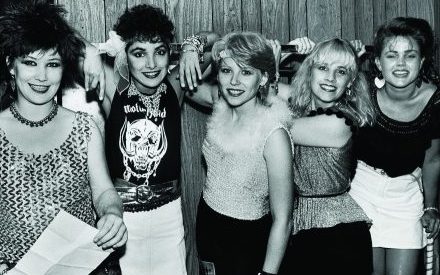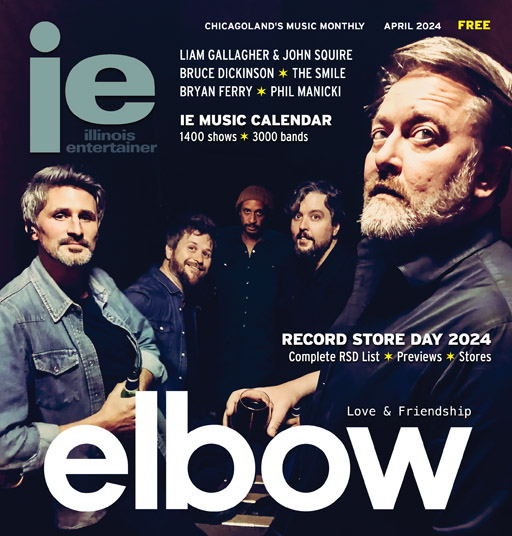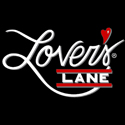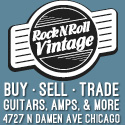Cover Story: The Go-Go’s – Document This!

Not that anyone should sink so deep into navel-gazing that they find fuzzy lint in these reflective post-pandemic times, but — as many folks are discovering — all this imposed downtime can lead to some eye-opening, perhaps life-changing introspection. The kind that might otherwise go unobserved back when we were all rushing through our hectic, often unfulfilling daily routines. So, in the best carpe diem spirit, why not seize such a golden opportunity now, before it’s gone, and take it to heart and remember it when we finally return to our old lives again? But it helps, of course, if you have a few tools for self-analysis on hand, like the members of Los Angeles pop-punk firebrands The Go-Go’s coincidentally just happened to have as Covid-19 assumed control over the past five months. They hadn’t planned it that way; they clarify — that’s just how things went down. Bassist Kathy Valentine published her hilarious autobiography, All I Ever Wanted, through the University of Texas Press. Drummer Gina Schock began compiling four decades’ worth of the band’s tour photos for her upcoming coffee-table book. The group all reunited for a one-off, classic-sounding single “Club Zero,” which was released in tandem with a new Showtime documentary, The Go-Go’s, directed by Alison Ellwood of Laurel Canyon renown. Unfortunately, Valentine’s spring book-signing jaunt was canceled. And an accordant Go-Go’s reunion tour that was set to bring the ladies — billed as the most successful all-female rock band of all time — back together from their various residences around the world has been postponed to 2021.
But there’s a lot of food for thought here. And truthfully, what could be more edifying than a film made about your career, which was rooted in the lava-molten punk hotbed of the L.A. punk scene, circa 1978? Outsiders might casually dismiss the events leading up to The Go-Go’s picture-perfect double-platinum debut Beauty and the Beat on the edgy I.R.S. Records back in 1981. Still, they were no cakewalk, and women – long before the #Metoo Movement or even Susan Faludi and Naomi Wolff had kicked in – had to practically street-fight for respect in the sexist, male-dominated music industry. That was the origin-issue story that Ellwood wanted to capture, and why she got the no-holds-barred green light from the quintet on the project. To discuss their awkwardly-timed comeback, Schock checked in from her home in San Francisco, where she’s taking care of her 96-year-old father, and Valentine phoned up from Austin, Texas, where she lives with her daughter, who is a restless 17.
IE: We first talked on the Beauty and the Beat tour, when you played Crazy Al’s Pizza Parlor in Indianapolis. We sat in a Conestoga wagon circle downstairs, as I recall.
KATHY VALENTINE: In Indianapolis? It’s just weird, because somebody asked me a couple of weeks ago if we played Indianapolis, and I said, “I don’t think we played there until the ‘90s!” So I didn’t know we did that city on the first tour because when I wrote my book, to help me piece together things in a verified way, I realized that there was no complete record of all the shows we played. So using my itineraries and various sources, I’ve been compiling every day’s events since I joined the band, and there are some missing days. But then again, we played hundreds of shows in those first two years, so I’m not surprised that one might have slipped through the cracks.
GINA SCHOCK: And I’ll tell ya something — I have the worst memory of anyone in the band. That is for sure. So I don’t remember that, but Hey — if you say so!
IE: I first moved to San Francisco from the Midwest in 1982. A friend of a friend, Carla Olson, Kathy’s first bandmate in L.A., had gotten me hired at BAM Magazine in California, so I came out initially just to see The Cramps three times in a row.
KV: Wow! I’m still good friends with Carla. We’re hitting all the nostalgia buttons here!
GS: The Cramps! That’s spooky — right here on my record player, I have the 45 of “Human Fly”! I have a couple of singles by them, and I keep everything. I mean EVERYTHING. And that certainly helped in the making of the film, because at least 80% of those photos are all mine, because I just became the archivist in the band, unknowingly, because that’s just how it happened. And I saved everything. I have every ticket, every backstage pass, every tour program. Everything you could think of from the band — I’ve got it. And I was taking photos the whole time, so I have LOTS of stuff. And with a photograph — just like with a song — you remember exactly what you were doing when you look at that, and you remember the whole story behind it. So that started the process of remembering so much of what I hadn’t thought about in many, many years; and also the process of doing a Go-Go’s coffee table book. So the memories just came flooding back, all the stories behind each photo. So I have everything out now, and I’m in the midst of it — I have so much work to do because the book is coming out next fall.
KV: And writing my book was incredibly cathartic, and also the cheapest and most intensive therapy, ever. It was a real journey, and I’m really proud of the book — I don’t think I could have done a better job, which is exactly how I wanted to feel. So the joyful stuff was awesome, and I tried to write what I was really feeling at that moment. So now I’m looking forward to getting started on another book — I’m kind of kicking myself that I haven’t started it yet.
GS: It’s so weird, looking back on all of this because it’s like you’re looking through a camera, and the lens is still the same, but what you’re looking at has changed. And you’re like, “Is this really me?” I still see things the same way, but it’s changed, even though I don’t feel any different. You know? Your body feels a little different, but the way I think about things is still the same. I don’t believe I’m over 50 — it’s weird. And my politics are still the same. But it’s strange — now you can’t even play to an audience, so I don’t know how doing these Zoom shows or whatever the fuck we’re going to be doing will work. It’s very strange to think of playing without an audience — I miss being on tour, I miss the interaction between the band and the audience, and the rush that you get and all that. I hope that it comes back more sooner than later.
IE: When producers proposed the documentary, were you like, “Yes!” Or, “Yeah…I dunno?”
GS: Well, everybody is “Yeah, I dunno,” at first. But I’m really sure that I was one of the first people in the band that was up for Allison doing our documentary. Because, oddly enough, I love watching documentaries. Old films and documentaries are what I’m into, and I had just watched American Jihad, and I was like, “This is fucking amazing! Who directed it? Oh — Allison Ellwood. She’s fantastic!” And then her name came up when our manager brought her up as someone that they had talked to about doing a documentary on us. And I was like, “Jesus Christ! We have to get this girl to work with us!” And she hadn’t even made Laurel Canyon yet, but she had just finished doing one on The Eagles. And I was knocked out by her American Jihad thing, but when I saw the Eagles one, I was like, “Wow. She is a great storyteller.” So I was 100% behind her doing our documentary. And after meeting her, everybody else was like, “Oh, yeah, man — she is IT.” You could just tell – she’s got heart, she’s smart, and she’s an amazing storyteller. So I think that we all felt like she was going to do a great job, because after all, we’re putting our whole career in her hands, as far as I was concerned. And her perspective on how things went down could have been told a lot of different ways. So thankfully, Allison became our director.
KV: This was our first-ever documentary, too. The only thing that had been done on The Go-Go’s was a VH1 Behind the Music. We were approached by producers, but it was their job to find a director, so we agreed that if they found a director that we liked, that we would consider doing it. But it took about a year before we actually agreed to do it. And Allison was a big part of the reason we said yes because we just loved her work. And we didn’t have a film camera with us on tour, so it wasn’t like there was a lot of footage lying around. So it was a real testament to her skill as a director that she was able to find enough content to be able to create a documentary. But she did find some cool stuff. The narrative is very focused on the band’s punk roots, and she didn’t know that the band came out of the punk rock scene. So she felt like that was an overlooked part of the Go-Go’s story because our success hinges on albums and singles that one would never listen to and go, “Oh, that’s a punk band!” And, she was really taken by that aspect of the story — that this band originally came together on the streets of L.A. from the punk scene, and then went all the way to the top.
IE: Having moved to SF in ’82, it’s hard to describe to any outsiders just how cool that scene was, especially in L.A. WE had The Avengers and The Dead Kennedys, but you had X, The Plimsouls, Code Blue, Rank and File, and Carla Olson’s band The Textones. You even had the late power-pop legend Phil Seymour, from the Dwight Twilley Band, on drums. Even Dwight Yoakam had rebelliously moved there from what he considered to be a staid, play-it-safe Nashville.
GS: And The Weirdos! The Blasters! It was a great time, wasn’t it? Oh, my God, what a great time in music! And it was like it was our club, too — it was our special little club, and it was very inclusive. And if you wanted to be a part of it, you were welcome — you just had to show that you were a badass. You had to be ready to become a rebel and really fight for what you felt. So yeah, it was a magical time, for sure. And I’m glad I wound up in L.A when I came to California. I came out in ’79 with Edie — Edith Massey from John Waters’s films.
KV: I hailed from Texas, and I had a really diverse musical education. I grew up with tons of blues, Americana, cosmic cowboy, and country. I grew up seeing the T-Birds and Stevie Ray Vaughn and Doug Sahm, So when I moved from playing guitar to the bass, it’s not that I was the greatest bass player — I was a new bass player, but I had such a good knowledge of music and a feel for it that I just knew how a song should feel. I knew when to swing, I knew when to drive it. And I think that’s how The Go-Go’s sounded with my addition (replacing Margot Lavarria in ’81) — I was really putting some swing and some drive in the right spots, with the right judgment and style.
IE: It’s hard to imagine a more memorable bassline — with its Brontosaurus-stomping drumbeat thundering in — than yours on “We Got the Beat.” Even though (guitarist) Charlotte Caffey originally wrote it.
KV: Well, there’s a version of “We Got the Beat” on an earlier single that they released before I was even in the band, and it’s basically the same parts. And Charlotte came up with that bass part, but I modified it and played it with my feel, just being from Texas. So I just took that idea and kind of made it my own.
GS: And when Charlotte originally brought the song in, or the idea for the song, and she started playing that eight-note riff, the way I play drums is, I play whatever the song requires. That’s the type of drummer I am — the song dictates what I play. And that’s what “We Got the Beat” dictated to me — that drumbeat. It was very obvious, and my body just started playing that. I didn’t really have a choice. And that’s just the way that I approach every single song — I hear something, then I might try a couple of things, but it just becomes obvious very quickly exactly what I’m gonna play. And thankfully, that one has become a very iconic beat. And then, of course, there’s that bassline! Kathy was a guitar player first, so her approach to playing bass was always a little bit different — it was very melodic playing. And Kathy and I used to spend a lot of time, just the two of us, in rehearsal rooms, with us just working on songs, just to get the two of us really tight. We would go in and just play for hours, going over songs until we felt like we were really, really tight. And our practice, I think, showed that when we played live. All that time that we put in. And it all adds up to what we are and how we play together now, some 20 years later.
IE: And you’ve composed a brand new track, “Club Zero,” which pretty much captures that ephemeral punk-pop essence. But you wrote it in an unusual way, by E-mail?
KV: Yeah. And it’s the first time that we’ve written like that, remotely. Usually we sit down together. But the challenge was, Belinda (Carlisle, vocalist) was in Bangkok, Jane (Wiedlin, guitarist) lives in Mexico, Charlotte’s in Los Angeles, and I’m in Texas and Gina’s up in San Francisco. So when you haven’t made a new record in 20 years, and you haven’t done any writing in that time, and you live in five different places geographically, and all your writing before this has been in a room together, well, how do we approach it? So we started out with this concept that we wanted to write about — we wanted an anthem, that represented how we felt about our legacy as leaders, representing what could be done when you defy all the powers that be, who are telling you, “Oh, no — we don’t wanna give you a record deal.” And when you persist, we just became leaders in our own way of women saying, “No, we CAN do it — we CAN have a band, we CAN make our own album, and all that.” And I’ll tell ya, we proved a lot of people wrong. We basically proved the entire industry wrong by having a #1 hit record. So we wanted to take that legacy of sisterhood and put it towards an anthem now about women assuming more positions of power and equality and politics. So we wanted an anthem, but we didn’t want to be all serious and stuff. We still wanted that fun Go-Go’s vibe. And that was a tall order. So I think Jane came up with the idea of a “Club Zero” and wrote some lyrics, and then Charlotte came up with the musical idea. — she had been writing a lot with her songwriting partner Anna Waronker from That Dog — and we have a history of using outside writers, as well, in the band, like (The Plimsouls’) Peter Case. So we started sending ideas back and forth — you’d just sing into your phone and go, “What about this?” And then we flew to SF to record it — all of us except Belinda, who recorded her part in L.A. on her next visit there — we worked with a very close friend who we trusted who has a studio there, and that seemed the most doable because it was a quick flight for Charlotte and me, and Jane still has a place up there where she stays sometimes. So it was quite an effort. QUITE an effort. It was a real challenge, but we’re were really glad when it all came together.
GS: And I hope we never do something like that again. Doing it over the phone was very different — you’d be working with one person, you’d hang up, then they might work on it with another person, and then you’d get another version of what you just worked on. It was very difficult. But, despite all that, I think we did a great job. We hadn’t recorded together in 20 years, but we went in the studio and hammered that song out in two days? THAT is a testament to our professionalism! It finally shows after all these years!
-Tom Lanham
The Go-Go’s documentary premiers on Showtime on July 31 and on Showtime Now.
Category: Cover Story, Featured, Features









